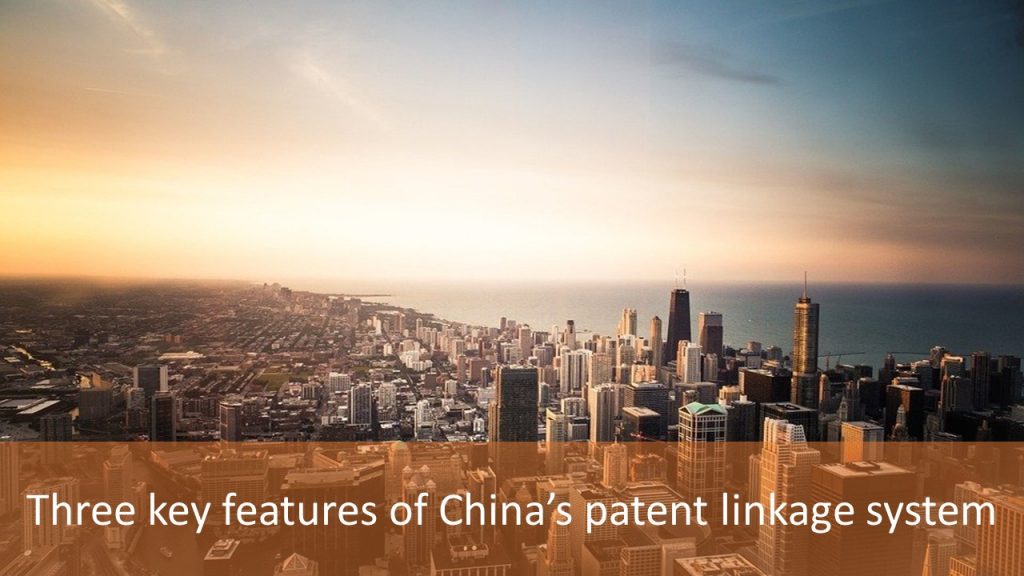After a long time of debate and amendment to fit with the actual practice in society, along with the delay due to the current epidemic in the world, on July 4, 2021, the National Medical Products Administration (NMPA), the China National Intellectual Property Administration (CNIPA) and the Supreme People’s Court has finally cooperated to publish the final version of their patent linkage rules – the ‘Measures for the Implementation of the Early Resolution Mechanism of Drug Patent Disputes (Provisional), Judicial Interpretation on Patent Linkage and Administrative Adjudication Rules’. These rules combined with the amended Patent Law have become the legal framework of China’s patent linkage system. This article will discuss three key features of China’s patent linkage system that all domestic businesses and foreign businesses who are operating in China need to know.
Declaratory action
Due to the fact that the newly amended patent law denies the artificial infringement doctrine, China has supplemented it with a ‘declaratory action’ type claim. This new change will create a new wave in the IP legal system in China. From now on, innovators and generics will be able to go to courts/CNIPA to confirm if the generics fall within the scope of innovator’s patents registered with China’s Orange Book or not.
‘Article 76 lawsuit’ of China’s Supreme Court has stipulated the way to designate that action. Furthermore, they have also shown that the decision could be used as a basis for the finding of infringement in future litigations unless evidence proves otherwise.
Nowadays, registration in bad faith is a common thing in society. Its main goal is not to register a trademark or patent but to prevent opponents to register it or most commonly, blackmail the rightful owners for personal gain. But in this new era, there is another type of bad-faith action that is spreading across China and the entire world – bad faith lawsuits. Some might even say that bad faith lawsuit creates even more damages than bad faith registration.
Accordingly, China has imposed some serious provisions to stop the abusive litigations in the Court. According to these provisions, if the patentee or interested party knows or acknowledges that the patent right claimed by him/her should be declared invalid, or the relevant technical solution of the drug applied for registration does not fall within the scope of patent protection, but they still bring a patent linkage lawsuit or adjudication, the generics may file a lawsuit for damages because of their previous bad-faith lawsuit.
Generics
Within 15 days of receiving a Notice of Acceptance, the holder must notify the CDE with a copy of the same or a Notice of Docket and notify the generic drug applicant. After that, the CDE will impose a 9-month moratorium on marketing authorization approval but will not stop the evaluation of the generic’s application. Note that generics of biologics and TCMs (traditional Chinese medicine) are excluded from the 9-month moratorium.
Even with a nine-month stay period and a 12-month market exclusivity incentive for successfully challenging generics which seems favorable to generics, the genuine concern of the community may be more about what kind of certainty both sides can benefit from before the generics are going to market.
Even with the winning of Article 76 action or even the invalidation action in the first instance by the generics, originators can still appeal to that decision and create a long-lasting battle that causes both sides irreplaceable damages, which may last two to three years depending on each different circumstances.
Parallel track for innovators and generics
Lastly and probably most importantly, China’s government has designed a parallel track for innovators and generics to deal with the patent linkage actions in good faith with the Court serves as the main ‘mediator’. Beijing IP Court is now designated as the court of the first instance and in the near future, the Court will soon receive and deal with a stream of urgent cases.
With the new patent linkage system, we can clearly see that CNIPA has up its play on this one. Specifically, with a new announcement about procedural rules, CNIPA has declared that it will set up a new board whose main function is to review and examine all the administrative patent linkage cases.
Accordingly, CNIPA’s decisions will be made public and are subjected to judicial review for transparency. This new set of actions will relieve the concerns of the industry and legal community about any potential inconsistency of adjudication standards between the courts and CNIPA.
You can see a list of China IP firms here.

